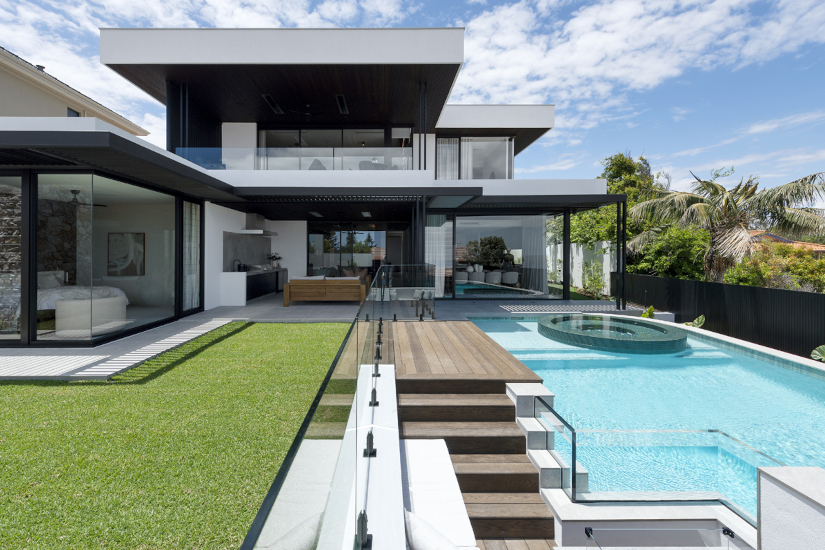
Tenant enhancements are an essential part of commercial property tasks, bridging the goals of landlords and occupants to create areas that work for both company operations and residential or commercial property value. They involve cautious coordination between lease terms, style options, building and construction timelines, and monetary agreements.

In this guide, you'll check out how occupant improvements are worked out, planned, developed, and handled. You'll learn the useful actions, roles, and techniques involved to avoiding costly mistakes and future-proofing the space for long-term usage.

What are Tenant Improvements?
Tenant improvements are long-term modifications made to a leased space to fit the specific requirements of a tenant. They're updates or adjustments that turn a commercial residential or commercial property into a practical area customized to the tenant's company. These improvements are often called leasehold improvements or betterments.
Tenant improvements are built into the residential or commercial property and stay after the occupant vacates. They're part of the building itself, including long lasting value for the landlord or residential or commercial property owner. In commercial realty, tenant improvements are typically set up through the lease contract to ensure the area is ready for the occupant's usage.
Why Tenant Improvements Matter
Tenant improvements matter because they straight impact how well a leased area works for the renter's business. Landlords and residential or commercial property owners focus on occupant enhancements due to the fact that they:
Attract Prospective Tenants: Make the business residential or commercial property more appealing to potential occupants who need a practical, tailored space.
Support Tenant Retention: Increase tenant complete satisfaction, reducing the danger of job and turnover at the end of the lease term.
Add Long-Term Value: Enhance the structure's marketability and usability, benefiting the property manager even after the occupant vacates.
Tenant improvements form how renters work, communicate, and grow their services. A thoughtful design can turn a leased residential or commercial property into a location individuals take pleasure in using every day.
Key Roles in Tenant Improvements
An effective renter improvement task counts on clear roles to remain on track. The property owner, tenant, and job supervisor frequently take the lead, while others help guide, oversee, or bring out the work.
Each individual plays an essential part in preparation, approving, and finishing the job:
Landlord: Approves enhancements, funds the tenant improvement allowance (sometimes called a TI allowance or improvement allowance), and guarantees changes follow building codes and lease terms.
Tenant: Defines area needs, requests specific upgrades, and examines strategies to ensure the renter enhancement lines up with their service objectives.
Project Manager: Oversees the occupant improvement building procedure, collaborates the group, manages the budget, and keeps the timeline on track.
Residential Or Commercial Property Manager: Acts as an intermediary in between property owner and occupant, keeps track of site gain access to, and assists impose building guidelines during building and construction.
General Contractor: Performs the renter improvement work, sources products, handles subcontractors, and ensures the job meets security and quality standards.
Consultant: Provides professional advice on design, engineering, compliance, or sustainability, guiding choices that affect the last build.
The method these roles engage affects more than job timelines or spending plans. Their choices help set the tone for how future enhancements, maintenance, or occupant demands are handled in the very same building.
What Qualifies as Tenant Improvements?
Tenant improvements qualify when they make long-term interior changes to a rented space that meet a renter's needs for their particular business operations. To count as a tenant improvement, the improvement should be fixed to the real residential or commercial property, remain in place after the lease term ends, and straight support the occupant's operations.
These leasehold enhancements generally follow three key requirements, described listed below.
1. Tenant-Specific Purpose
A tenant-specific function certifies an improvement due to the fact that it serves the requirements of one occupant and uses only to their leased properties. This occupant enhancement is not meant for shared or common locations of the commercial residential or commercial property. It tailors the space exclusively for the tenant's needs, lining up with the business's practical requirements under the lease agreement.
2. Permanent Attachment
A long-term attachment certifies an enhancement when it can not be quickly gotten rid of or eliminated at the end of the lease. It must remain set to the building as part of the property, ending up being part of the structure enhancements or betterments that boost the general residential or commercial property.
Examples include built-in shelving, plumbing, or interior walls installed during the renter improvement construction stage.
3. Landlord Ownership
Landlord ownership certifies an enhancement because it ends up being the property owner's residential or commercial property once the lease ends. The tenant enhancement sticks with the building for the advantage of future potential occupants, adding to the long-lasting worth of the commercial property and supporting future tenant screening efforts.
Qualifying tenant improvements frequently depend upon little information composed into the lease contract or talked about throughout lease negotiation. Putting in the time to clarify these terms early can avoid conflicts later on, particularly when enhancements blur the line in between long-term functions and detachable items.
Examples of Tenant Improvements

Examples of renter improvements reveal the types of irreversible changes that shape a leased space to fulfill a tenant's requirements. These enhancements typically concentrate on structural upgrades, interior surfaces, and system updates. The next areas explain these classifications in more detail.
Structural Modifications
Structural adjustments in occupant improvements change the layout or structure of the leased properties. They assist specify how the area functions for various organization operations.
Common structural modifications include:
New Interior Walls: Build walls to produce offices, conference spaces, or storage locations.
Removed Partitions: Take down existing partitions to open up layout or expand spaces.
Altered Load-Bearing Structures: Adjust structural assistances to fulfill particular design or design requirements.
Structural changes need careful planning since they can impact the building's stability. Even little modifications can trigger building regulations reviews or engineering checks that extend timelines.
Interior Finishes
Interior completes in occupant improvements focus on the products and surfaces that complete the leased area. They provide the leased space a refined, functional feel for the occupant's everyday operations.
Common interior finishes consist of:
New Drywall: Install drywall to define spaces, cubicles, or other functional spaces.
Updated Flooring: Replace old flooring with carpet, tile, or hardwood to match renter choices or building owner standards.
Painted Walls and Ceilings: Apply fresh paint to revitalize the area or meet branding guidelines.
Interior ends up leave a long lasting impression on tenants and visitors. Thoughtful material choices can improve convenience, maintenance, and even acoustics inside the leased residential or commercial property.
Systems and Fixtures
Systems and components in tenant improvements cover the practical parts that support day-to-day organization activities. These upgrades make certain the rented space is equipped for operations.
Common systems and fixtures include:
Lighting and Electrical Upgrades: Install brand-new lights, electrical wiring, or outlets to improve function or satisfy devices requirements.
Plumbing and HVAC Improvements: Update pipes lines or HVAC systems to support restrooms, kitchens, or temperature level control.
Shelving and Countertops: Add fixed shelving or work surface areas to support storage, display screen, or workspace requirements.
Some costs don't qualify as renter enhancements because they aren't fixed or permanent. Items like furniture, office chairs, electronics, internet setup, or upgrades to shared areas are left out since they can be gotten rid of at the end of the lease.
Systems and fixtures frequently need approvals from several celebrations before setup. Early coordination with professionals and inspectors assists avoid delays and pricey rework.
Who Pays for Tenant Improvements?
The proprietor is typically accountable for paying for occupant enhancements, however the arrangement can move some renter enhancement expenses to the occupant. In many cases, the proprietor sets a budget, manages the work, or offers financial backing through worked out terms such as a tenant improvement allowance or lease reward.
The individuals who typically cover the cost of renter enhancements are:
Landlord: Pays for improvements to attract or keep renters, frequently through a TI allowance or by completing the work straight.
Tenant: Pays any costs that exceed the allowance or picks to fund upgrades not covered by the landlord.
Both Parties: Share expenses based upon lease settlements, splitting duty for particular improvements or classifications of work.
Spending for tenant improvements is seldom a simple handoff. It reflects each celebration's top priorities and utilize throughout lease settlement, making clear interaction and composed agreements necessary to prevent misunderstandings.
Tenant Improvement Construction Process
The tenant improvement building and construction procedure moves the occupant improvement job from plan to finished space. It follows clear steps that include planning, permitting, and structure. The next sections discuss what takes place at each stage.
1. Planning a Tenant Fitout
Planning an occupant fitout or buildout sets the foundation for the whole renter enhancement procedure. This phase focuses on lining up the occupant's needs with the building's restrictions and the project budget plan, including any renter improvement allowance or TI allowance worked out in the lease agreement.
Planning a tenant build-out involves:
Needs Assessment: Gather detailed input from the tenant to comprehend design, finishes, and practical requirements for the rented facilities.
Preliminary Design: Create drawings and mockups to check concepts, change designs, and improve scope before official approvals.
Budgeting: Estimate costs based on design alternatives, the offered renter improvement allowance, and get ready for potential lease settlements or changes.
A solid planning phase conserves time later on by minimizing pricey modifications as soon as construction begins. It likewise helps clarify expectations early for both tenant and property owner, making sure the tenant enhancement lines up with the industrial lease.
2. Navigating Building Codes and Permits
Navigating building regulations and permits guarantees the occupant improvement task meets all legal and safety requirements. This step avoids compliance concerns that might delay or stop building and ensures that any adjustments adhere to regulations.
Navigating structure codes and allows includes:
Code Review: Check regional building regulations, zoning guidelines, and accessibility requirements to validate the job lines up with legal guidelines.
Permit Application: Submit building drawings and required files to local authorities to protect the essential permits before building and construction starts.
Inspection Coordination: Schedule and get ready for evaluations at needed turning points to verify compliance throughout building.
Building codes can vary widely by location, so staying proactive with research and coordination keeps the task on schedule and avoids costly redesigns. Compliance safeguards both the landlord and occupant and makes sure the leasehold enhancements meet safety standards.
3. Managing the Tenant Fit Out Timeline
Managing the occupant fit out timeline keeps occupant enhancement building on track and lined up with the lease start date. This phase coordinates professionals, products, and evaluations to deliver the rented space all set for occupancy.
Managing the tenant fit out timeline includes:
Scheduling Trades: Organize when various professionals, like electrical contractors and painters, work on-site to prevent delays and overlaps.
Tracking Milestones: Monitor development versus crucial dates, adjusting the task schedule as required to deal with surprises or material hold-ups.
Punch List Closeout: Complete a last walkthrough to capture impressive jobs and make sure all work satisfies the lease agreement and tenant expectations.
Fit out timelines frequently deal with pressure from numerous instructions. A flexible method assists balance speed, quality, and the renter's needs without compromising the end result. Careful coordination with the residential or commercial property owner and structure owner supports smoother project delivery.
How to Future-Proof Tenant Improvements
Future-proofing tenant improvements suggests making choices that keep the rented residential or commercial property adaptable, efficient, and important in time. You can concentrate on flexibility, durability, sustainability, and compliance to secure your financial investment for the long haul.
The techniques that help future-proof renter enhancements are:
Future-proofing techniques like these can also lower running costs, improve tenant complete satisfaction, and increase a structure's appeal in competitive commercial realty leasing markets.
Every enhancement that balances versatility, efficiency, and sustainability makes the area easier to lease, maintain, and adapt over time.
Common Mistakes and Solutions in Tenant Improvements
Tenant improvement projects typically face preventable mistakes that create delays, extra expenses, or disappointment. You can prevent the most common concerns by concentrating on planning, interaction, and oversight.
The most frequent mistakes and their useful options are:
Tenant enhancement mistakes typically expose gaps in how groups share understanding across lease settlements, TI jobs, and functions. Building a process to capture lessons found out from each project can assist companies prevent repeating the same mistakes in future rental space upgrades.

Tenant Improvements Build Value Beyond the Lease
Tenant enhancements create chances to future-proof the structure while solving today's requirements. Each upgrade can set a foundation for faster renter turnover, minimized vacancy time, and lower remodelling costs between leases. By choosing adaptable layouts, scalable systems, and resilient materials, landlords and task teams build an area that works now and stays competitive in the market when the next renter gets here.







